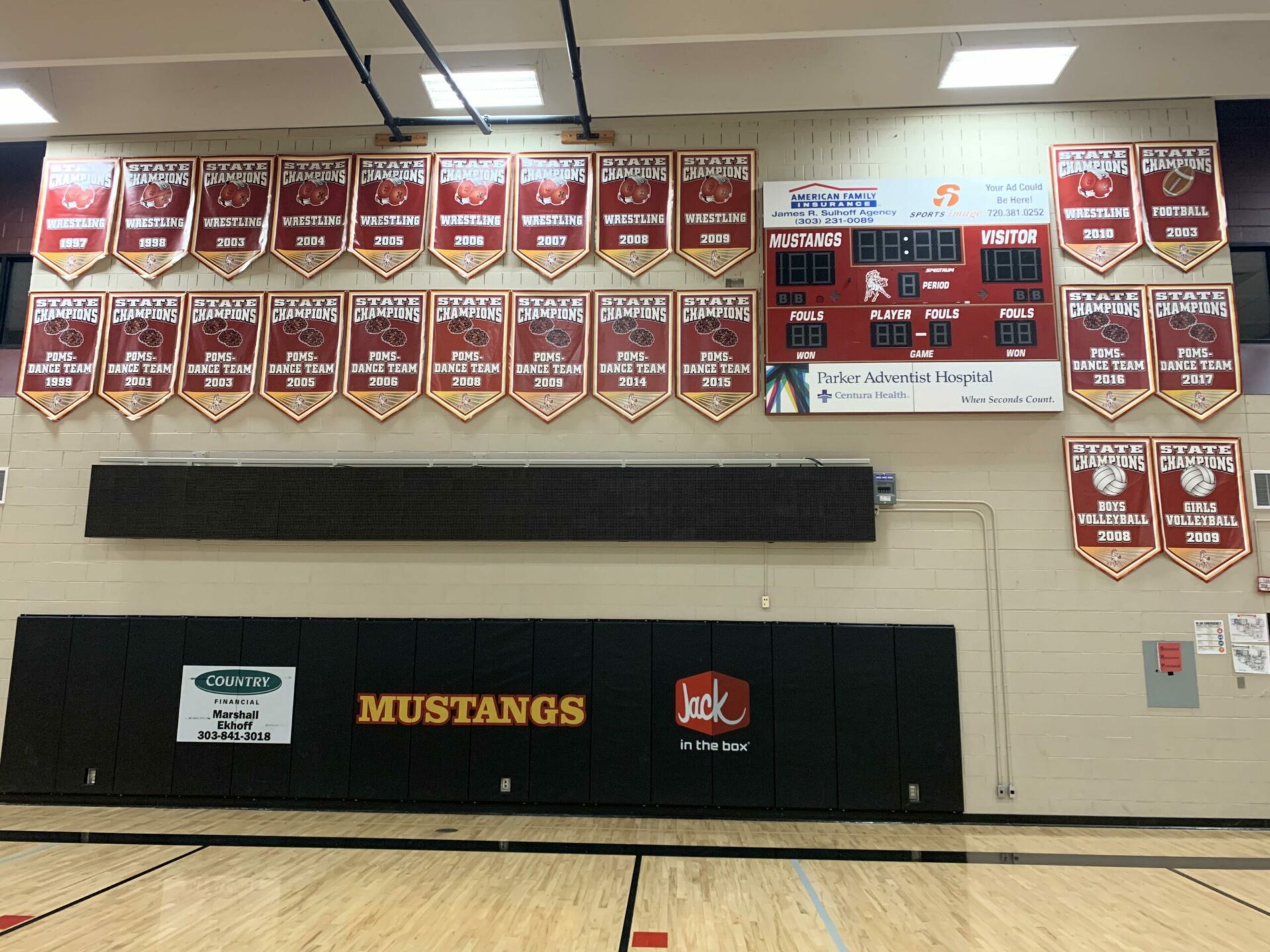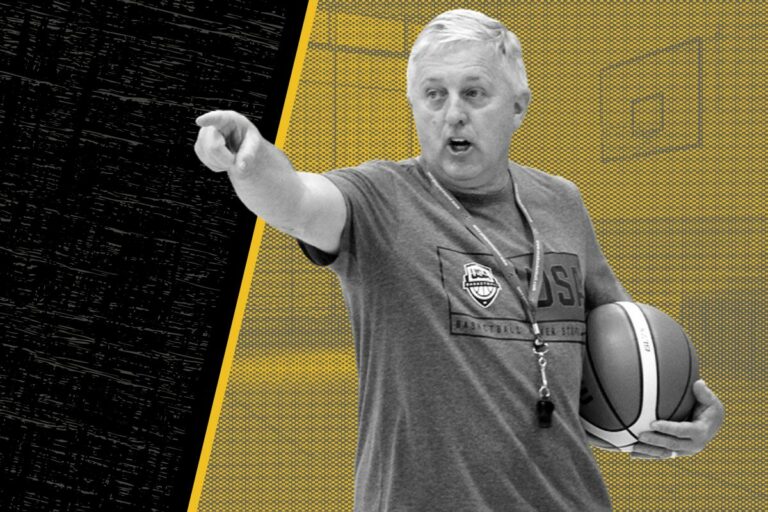10 Leadership tips to grow a champion program
- Always remember: success lives in the details.
- A well-structured practice is a strong indicator of a well-structured team.
- Team relationships are invaluable and will last a lifetime.
Over the past two decades, Colorado natives Angela and Tim Ottmann have experienced no shortage of success on and off the field: 19 state championships, 27 league championships, and 22 years of marriage. With four sports coached between them, the Ottmanns’ prowess for elite program building transcends activity type.
But, as the couple says, “success leaves clues.” While it’s important to remember that you can never truly learn it all, there are clear steps you can take to set your program on a championship trajectory.
Here are 10 tried and true leadership tips for coaches from Angela and Tim Ottmann for pushing any program to reach its potential.
#1: Be Passionate
If you exude genuine passion for your program, and walk your talk every minute of every day of every day, that infectious energy will be mirrored by your participants, your staff, and even by your parents.
It may sound obvious, but one of the most essential—yet most often overlooked—leadership tips for coaches of any successful program is passion (just ask McKinney’s football coach Marcus Shavers).
If people don’t buy in, and fail to infuse every day with energy, resilience, and a relentless desire to improve, your program will never reach its potential.
Of course, everything starts with you: the program leader.
The passion you have for your program and for your participants should drive your actions and consume the majority of your thinking—even bordering on obsessiveness at times. In order to be truly successful, you have to love what you do. You have to love being a mentor and a leader. You have to love showing up for your kids.
#2: Build A Quality Support Team
The second foundational piece of a quality program is ensuring that you have surrounded yourself with a quality support team.
“It’s not what you have, it’s who you have,” Lou Holtz famously said. Make sure to subscribe to this philosophy! Hire quality individuals who compliment your style but also challenge your thinking. This includes not only assistant coaches, but team parents, choreographers, strength coaches, and technicians.
If any individual has a direct impact on your program, make sure that they are of the same caliber and are held to the same standards as your own team.
#3: Work Hard
The third component of a successful program is that it must be modeled and built around hard work. Put simply, work hard and good things will happen.
There are no shortcuts to success, so you must outwork your competition in order to achieve greatness. For your participants, that means drilling tactics, technique, and conditioning—safely. For you and your coaching staff, that means diligently preparing, and never getting complacent.
Just like John Wooden suggests, you must continually seek out new perspectives that challenge your old ways of thinking. This takes time and effort. But in order to give your participants the best possible experience and stay ahead of the curve, it’s critical to keep learning and innovating.
Along the way, your program may experience adversity in the form of key injuries, departures, or other setbacks. But if you have established a strong culture of hard work, it will be easier for others to step up and grind to help the team strive forward.
#4: Have Effective Player-Coach Communication
A great way to promote healthy communication and transparency is to hold parent meetings several times per year. It’s important that these meetings take place in person, as it enables you to more clearly communicate all the information you need to and field any questions they may have.
Once you’ve begun to build those positive relationships, strong communication is key to maintaining and deepening them.
In addition to parent meetings, make sure to hold both coaches and captains meetings regularly in order to keep everyone on the same page. Doing so will help maintain a healthy and consistent hierarchy of communication.
Finally, keep any relevant administrators in the loop, so that new information never reaches them secondhand.
Combining all of these leadership tips for coaches will help you keep your program on the same page.
#5: Building a Feeder Program
Another critical but often overlooked component of establishing a legacy program is to invest in your feeder programs. Make sure that you build strong relationships with the programs that feed into yours, from elementary school on.
Host or co-facilitate camps, clinics, workshops, and training events every year, so that once younger participants reach your program, you’ve already developed relationships with them—and the coaches who got them there.
By building a feeder program, you will be able to promote a consistent identity throughout every level. That way when students finally reach the most competitive tier, they will already understand the philosophy, tactics, and values championed by your program.
#6: Fostering Positive Team Relationships
It’s crucial to build positive relationships not just with the kids, but with the parents, coaching assistants, administrators, and other leaders in the community. Championship banners may fade, but the team relationships you build will last a lifetime.
Every great program is ultimately defined not by the competitions it wins, but by the community it creates. Plus, from a practical standpoint, it’s critical to develop quality relationships with the feeder programs in your area, as mentioned earlier.
An additional part of building these positive relationships is ensuring that you appropriately handle any conflicts that might arise. As the program’s leader, it’s your duty to address conflict within the community and work to resolve it whenever it may appear. While doing this may not always be the most pleasant part of your job, appropriate conflict resolution will promote a supportive, team-first culture.
#7: Host Quality Practices
Before practice even starts, make sure that you’re on top of your game by writing out a practice plan. A well-structured practice is a strong indicator of a well-structured team.
Don’t post this plan publicly, but have it for your own reference to help keep each practice organized and flowing. Within your practice plan, make sure to include a mix of conditioning, drills, and tactics, as well as scrimmages or competition routines. Variety will always benefit your players, but mixing things up will help keep practice fun, too.
One of our go-to leadership tips for coaches when it comes to setting the tone is to have captains kick off practice. Another effective strategy is to start practice at an odd time to help people be on time—research shows that 6:57, for example, is more memorable than 7:00.
Also, be sure to make effective use of your assistant coaches, as they’re there to help your practice run smoothly. Above all, work to ensure that practice is a place where your participants can have fun so they look forward to attending!
#8: Have A Strong Offseason Program
Another trait shared by all successful high school programs: the hard work doesn’t stop when the season ends. A quality offseason program can help to keep your participants and community motivated to keep learning and improving.
There are several important ways to ensure that your participants receive quality offseason support. You can hold camps during the offseason, or encourage your participants to go to other camps to help them hone their skills and knowledge. Beyond camps, offseason weight training and conditioning can prove to be just as critical as in-season training.
No matter what strategies you use, helping create clear offseason goals for your participants can have exponential effects on your high school program’s success the following year.
#9: Schedule According to Your Talent Level
In order for your program and participants to improve, you must challenge them, while still setting them up for success.
That’s why coaches and program leaders should manage their own scheduling for games, tournaments, and competitions. In other words, schedule according to your program’s talent level.
Who understands your program’s true talent level better than you do? Taking ownership of this process will allow you to design a schedule that challenges your program in the right ways.
If your program is among the elite in your region, you should be competing against other successful high school programs that are as good (or better) in order to prepare for the postseason. Travel to tournaments if possible to take on new competition.
If your program is less competitive, schedule teams that are of a similar caliber in order to keep your participants motivated and ensure fairly matched competitions.
Billie Jean King famously said, “pressure is a privilege.” Make sure you’re not denying your participants that privilege and are putting them in situations that will make them better.
#10: Pay Attention to the Details
While it’s important to develop a big-picture vision for where you want to take your program, don’t lose sight of this simple truth: success lives in the details.
Think about the day-to-day grind of your sport or activity. To make sure no detail is overlooked, planning is your best friend. An effective leader is a prepared leader, so make sure to utilize every tool you have at your disposal to help you handle any problem that may arise.
Before every competition or trip, make sure to triple check your equipment, travel arrangements, logistics and scheduling well ahead of time, so that you’re able to account for anything that might go awry.
While it might be easy to pass off the little details as inconsequential compared to other leadership tips for coaches, it’s these details that make the difference between a decent program and an extraordinary one. After all, “it’s what you learn after you know it all that counts.” So, if there’s always more to learn, then there’s no detail too small to overlook.
The Key Takeaways
While these essential leadership tips for coaches can be the difference between your program reaching new heights or stumbling in mediocrity, they aren’t the only conditions for success.
When it comes down to it, Angela and Tim Ottmann understand that a program is only as strong as its leader. That’s why a successful leader isn’t merely an expert tactician and an adept motivator—they are caring, humble, and grateful for what they do.
Most importantly, they’re never finished. Successful leaders are never finished learning. Successful leaders are never finished failing. Successful leaders are never finished growing.
Understand that even when you think you’ve reached your peak, there’s always more you can learn. So, let the words of Angela and Tim Ottmann and the great John Wooden push you onward.
Success leaves clues. Think about some of those clues you’ve learned through your experience and share them with our community!











